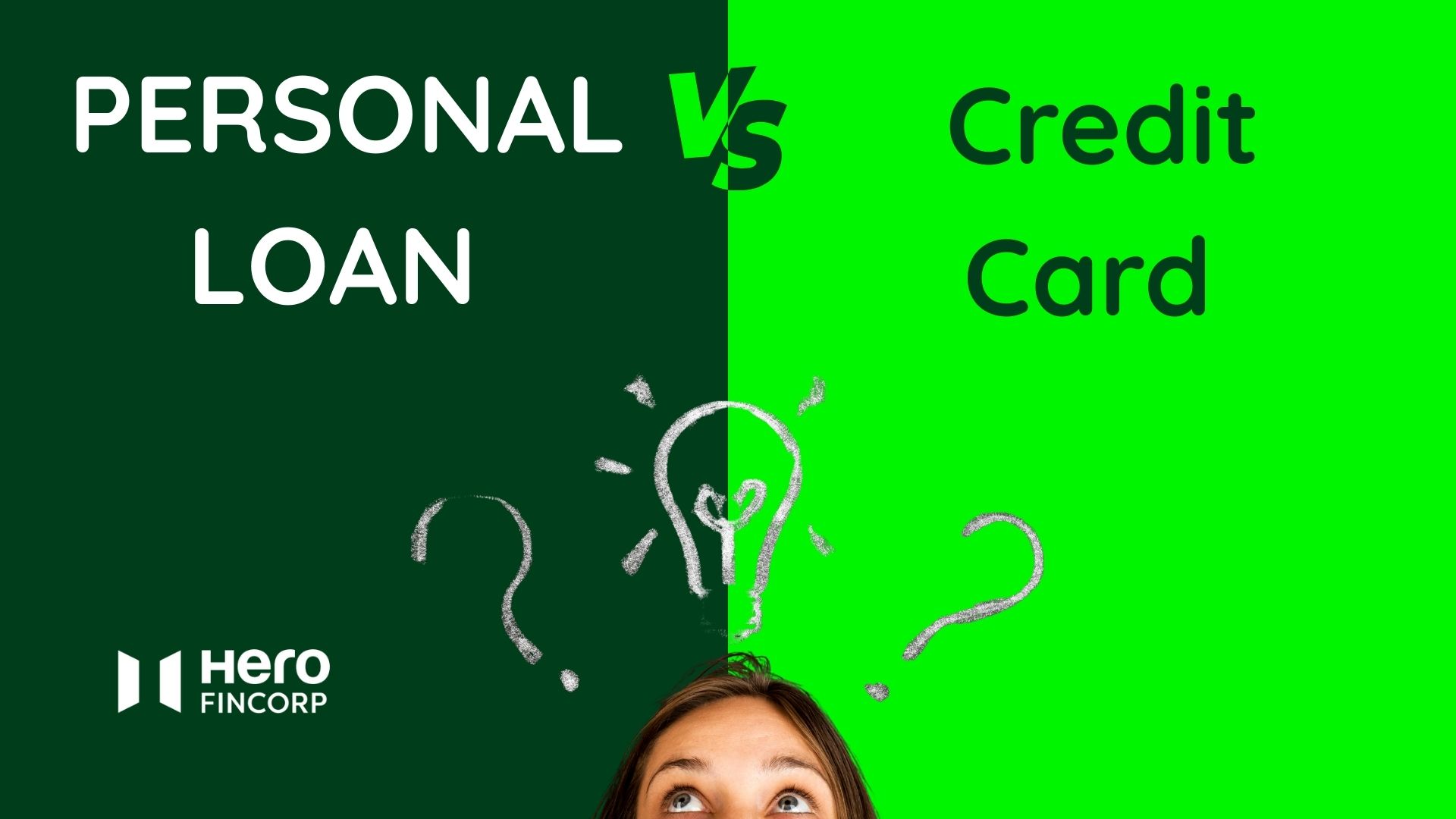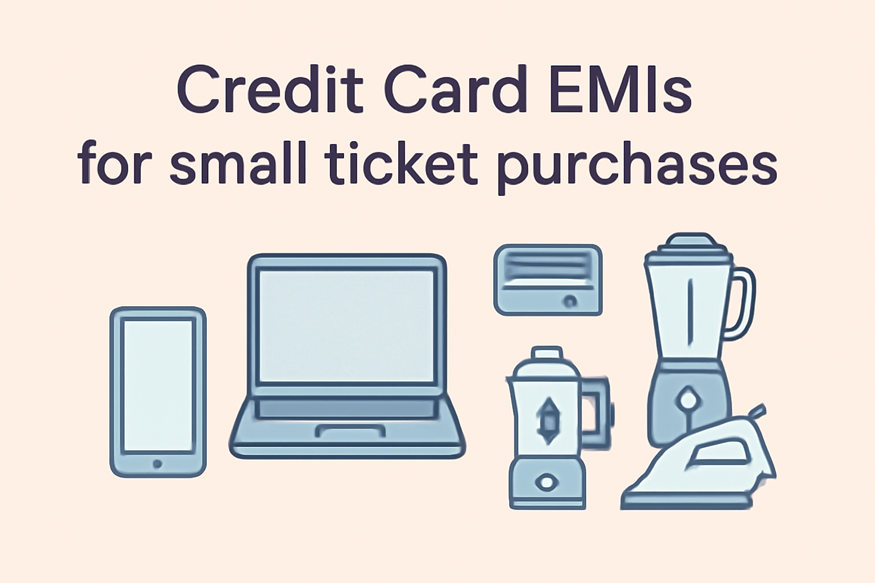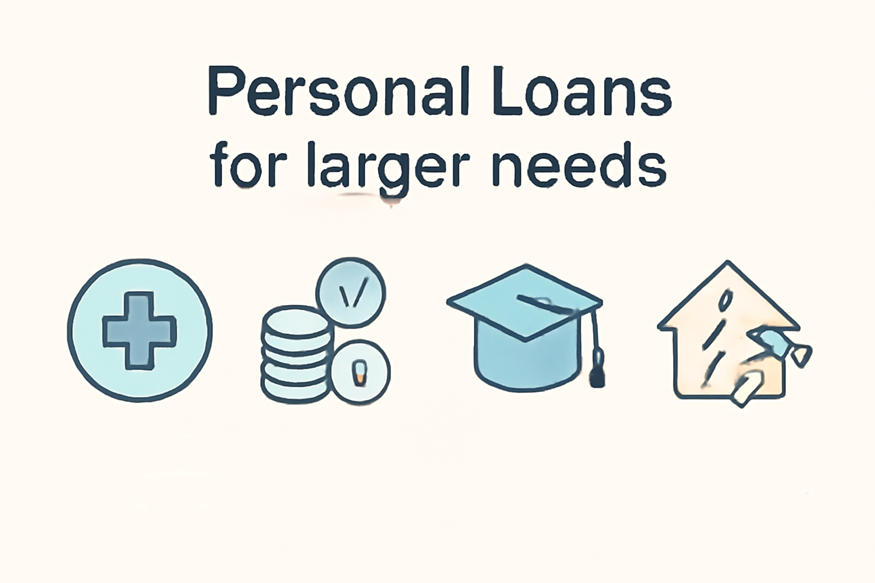Personal Loan vs. Credit Card EMI: What to Choose, and When

When life throws an unexpected expense your way, be it a medical emergency, a car breakdown, or a sudden need to replace an essential gadget, you generally have three options: use your savings, swipe your credit card, or take a personal loan.
It's not always the best idea to liquidate investments or draw on savings. Usually, that leaves you only two sensible options: a personal loan or an EMI on your credit card. But when and which one should you choose? Let's dissect it.
Personal Loans: Pros And Cons
A personal loan is the simplest way to borrow money. You apply via an instant loan app, upload your documents, and if everything checks out, you get the required amount disbursed, usually within 24 hours. There is no collateral involved.
The ability to access larger amounts and a longer payment period (often up to 48 or 60 months) is the primary benefit of personal loans over credit cards.
With digital-first lenders like Hero FinCorp, the process is seamless—just a quick application and verification step, and you're ready to receive your funds. The only thing to keep in mind is that, like any loan, repayment discipline is important.
Credit Card EMIs: Pros and Cons
Credit card EMI is an option available to credit card holders, allowing them to convert a single large payment into smaller EMIs. If you already have a credit card on hand, you can instantly convert it into installments without filling out forms or submitting extra documents.
The tradeoff, however, is in the limits. How much you can spend is limited to the credit limit of your credit card.
The second limitation is that the repayment tenure is usually capped at 12 to 36 months (except for a few speciality cards). And finally, interest rates on credit cards are on average 1.5-2 times that of a personal loan.
When Should You Pick One Option Over The Other?
To know which financial product to pick based on the situation, let's first look at their key difference side-by-side:
| Personal Loan | Credit Card | |
|---|---|---|
| Eligibility | Good credit score, income, and identity proofs. | Must hold a valid credit card. |
| Loan Amount | Several lakhs | Limited to the credit limit |
| Tenure flexibility | 12 to 36 months | Usually 3 to 24 months |
| Interest rates | Lower, fixed for tenure | Generally higher, depending on the type of card. |
Now, with this in mind, let's look at how to choose between the two.
When Should You Choose a Credit Card EMI?

A credit card EMI should always be used for small-ticket purchases, like a laptop or a smartphone. They are not designed for large funding needs.
As good practice, you should always try to keep your credit utilization under 30% of your total credit limit. Any higher, and lenders will see you as a risky borrower. Maxing out your credit card or going over the limit draws heavy penalties and interest, and is a sure shot way to fall into the debt trap.
When Should You Choose a Personal Loan?

For any situation that requires a larger sum of money, i.e, medical emergencies, debt consolidation, higher education, or even major home repair, a personal loan is always the better choice.
You have access to a larger sum of money, and you have more control and predictability over repayments. Using a personal loan EMI calculator will help you plan your finances better before you take the loan.
Conclusion
Credit card EMIs can work well for small, one-off purchases like a phone or a laptop. But when it comes to larger financial needs, a personal loan is almost always the better option.
With comparatively lower interest rates, longer repayment tenures, and predictable EMIs, it gives you both flexibility and peace of mind.
If you need funds urgently, an instant personal loan from Hero FinCorp is your best bet. With a fully digital process and quick approvals, the money you need can be in your account in less than 24 hours.
Also Read: how to calculate emi for personal loan
Frequently Asked Questions
What works out cheaper, taking a personal loan or a credit card EMI?
Personal loans almost always incur lower interest rates and, therefore, turn out to be the cheaper alternative for borrowing funds.
Can I take a personal loan and a credit card EMI at the same time?
Yes, you can; however, it's not recommended. That said, if you have to, always make sure that you have a financial bandwidth to repay all the EMIs on time.